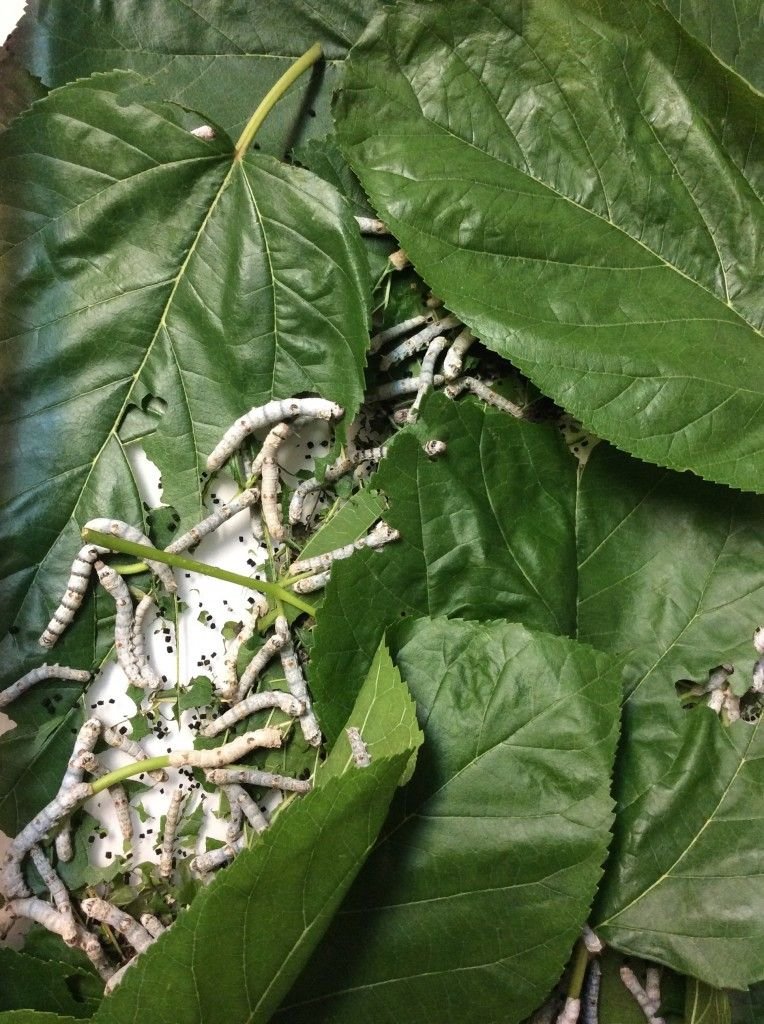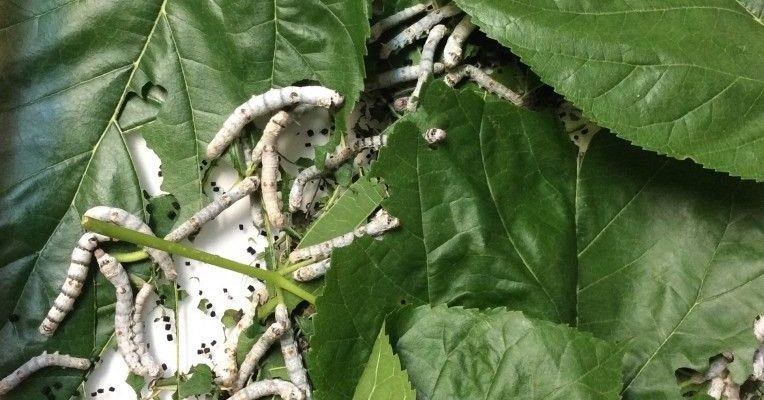
Silkworms, known scientifically as *Bombyx mori*, are the larvae of the silk moth and have a pretty special diet. They’re picky eaters, primarily consuming mulberry leaves during their growth stages. But what if, for some reason, these leaves were off the menu? This article will explore whether silkworms can thrive without their mulberry diet, what alternatives exist, and how this impacts their life cycle.
Understanding Silkworms’ Dependence on Mulberry Leaves
Let’s start with the basics. Silkworms are like the true connoisseurs of the insect world. They prefer mulberry leaves because they’re packed with nutrients that help them grow strong and healthy. You might think of these leaves as a gourmet meal for a very picky eater—without them, silkworms could struggle significantly.
Their main diet consists of young, fresh leaves that are soft and easy to digest. These leaves provide essential proteins and carbohydrates, which are crucial for their growth. When a silkworm eats, it can consume its own weight in leaves each day! That’s a lot of munching. It’s this diet that ultimately allows them to spin silk and grow into mature moths.
What really happens when they don’t get enough mulberry leaves, though? Well, without this key food source, they will face several challenges. Growth slows down, and they might even stop spinning silk altogether. Without these vital leaves, it’s tough for them to complete their life cycle.
The Life Cycle of Silkworms
To truly grasp why mulberry leaves are so vital, it’s helpful to understand the life cycle of silkworms. They go through four main stages: egg, larva (this is the silkworm stage), pupa (cocoon), and adult moth. Each stage has unique needs, but the larval stage is when their diet is most critical.
– Egg stage: This is where it all begins. A female moth lays hundreds of tiny eggs, which hatch into larvae.
– Larval stage: This stage lasts about 4 to 6 weeks. The silkworms grow rapidly, shedding their skin several times. During this phase, their diet of mulberry leaves is essential for healthy growth.
– Pupal stage: Once they’ve grown enough, they stop eating and start spinning cocoons. This is their transformation phase.
– Adult moth: After about 2-3 weeks in the cocoon, they emerge as adult moths, ready to mate and start the cycle over.
This life cycle is fascinating, but the larval stage is where the magic happens. Without adequate food, things can go awry, affecting everything from their size to their ability to produce silk.
Can Silkworms Eat Other Leaves?
You might be wondering, “What if silkworms don’t have mulberry leaves? Can they eat something else?” The good news is that silkworms are not strictly limited to mulberry leaves. They can eat other types of leaves, like those from the white mulberry, black mulberry, and even the osage orange. However, these alternatives might not provide the same nutritional benefits.
Here’s a quick comparison:
- White Mulberry: Similar nutritional content, can be a good substitute.
- Black Mulberry: Also edible but may not be as nutritious as its white counterpart.
- Osage Orange: Edible but not ideal, as it lacks some essential nutrients.
While they might survive on these alternatives, they won’t flourish in the same way they would with their beloved mulberry leaves. So, if you’re raising silkworms and find yourself out of mulberry leaves, consider these other options, but keep in mind the potential impact on their health.
Effects of Malnutrition on Silkworms
If silkworms are unable to eat their preferred leaves regularly, malnutrition can kick in. Honestly, it’s a bit like us trying to live on junk food—sure, we might get by, but we won’t feel great. When silkworms don’t get enough nutrients, several problems can arise:
1. Stunted Growth: Just like we might struggle to grow taller if we don’t eat well, silkworms can’t grow properly without the right food. They may not reach their maximum size.
2. Reduced Silk Production: One of the most significant impacts of malnutrition is a decrease in silk production. If silkworms aren’t getting enough nutrients, they might not spin as much silk, affecting their value in the silk industry.
3. Increased Mortality Rate: Unfortunately, without a proper diet, the chances of dying increase. Silkworms that can’t access enough food will struggle to survive, often leading to higher mortality during the larval stage.
It’s clear that mulberry leaves aren’t just food; they’re the fuel silkworms need to thrive.
Alternatives to Mulberry Leaves in Silkworm Rearing
If you’re in a pinch and need to feed your silkworms something other than mulberry leaves, there are a few alternatives worth considering. While they may not be perfect, they can provide a temporary solution:
– Fruit Leaves: Leaves from plants like figs and apples can be used in small amounts. They offer some nutritional value, though they aren’t as rich as mulberry.
– Vegetable Greens: Some gardeners have experimented with cabbage or lettuce. However, care is needed, as these can be too watery and may not meet all their dietary needs.
– Commercial Silkworm Feed: For those raising silkworms at a larger scale, specialized commercial feeds are available. These are designed to mimic the nutritional profile of mulberry leaves.
While these alternatives can help in a tough spot, they shouldn’t replace mulberry leaves as a primary diet. Think of them as a backup plan—better than nothing, but not the same quality.
The Importance of Proper Diet in Silkworm Cultivation
When it comes to raising silkworms, a proper diet is crucial. Just as we need a balanced diet to thrive, silkworms depend on a nutrient-rich meal plan. Raising silkworms isn’t just about getting them to spin silk; it’s about ensuring they are healthy and able to grow.
Having access to fresh mulberry leaves ensures that they get the right balance of proteins, fats, vitamins, and minerals. This balance helps them to grow quickly, produce high-quality silk, and complete their life cycle effectively.
If you’re looking to cultivate silkworms, it’s worth investing time into sourcing good-quality mulberry leaves. Whether you plant your own or find a reliable supplier, having that steady supply can make a world of difference in your silkworm project.
So, can silkworms survive without mulberry leaves? In short, yes, but their survival comes with significant challenges. They might nibble on alternatives, but none will replace those vital mulberry leaves. Just like our favorite meals help us thrive, silkworms rely heavily on their nutritious diet to grow and produce silk.
If you’re raising silkworms, prioritize mulberry leaves whenever possible. And remember, a well-fed silkworm is a happy silkworm—one that can grow, spin silk, and successfully complete its fascinating life cycle. Embrace the journey of silkworm cultivation and ensure they have all the nutrients they need for a healthy, productive life!

